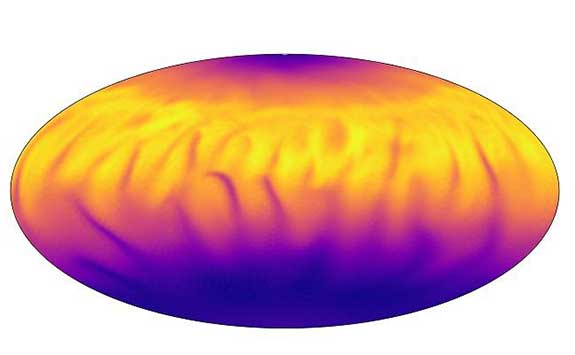Dr Toby Wood's Research Published in Nature Astronomy
Buried magnetic fields explain brightness variations in neutron stars.
13 January 2021
Buried magnetic fields explain brightness variations in neutron stars
Research carried out by School of Mathematics, Statistics and Physics Applied Mathematics Lecturer Toby Wood has been published in Nature Astronomy.
The paper, which was written in collaboration with Andrei P. Igoshev, Rainer Hollerbach, and Konstantinos N. Gourgouliatos, is titled 'Strong toroidal magnetic fields required by quiescent X-ray emission of magnetars' and it's helping explain what causes the changing brightness of distant stars.

Magnetars
Neutron stars harbour the strongest magnetic fields found anywhere in the Universe. The most magnetic of these stars -- known as "magnetars" -- have fields as strong as 1015 gauss. Magnetars are known to be very active, producing sudden bursts of X-ray radiation as bright as a trillion Suns. But even in their quiet state they can remain as bright as our Sun, and observations suggest that this radiation is emitted from "hot spots" scattered on the star's surface.
These stars have a solid outer crust, and the flow of heat through the crust is dictated by the shape of the star's magnetic field. The research team developed the first three-dimensional model of the magnetic field and the flow of heat through the crust, in order to relate the surface temperature pattern to the field configuration.
They showed that a simple dipolar magnetic field cannot produce the hot spots seen in real observations. However, if the crust also contains a strong toroidal (i.e. horizontal) magnetic field, heat is funnelled into one hemisphere, producing modulations in the radiation that are consistent with magnetar observations.
The image below shows the surface temperature in one of their models, which has a very strong toroidal field, containing 90% of the total magnetic energy. The striped patterns result from an instability of the toroidal field close to the star's surface.
The full article can be viewed on the Nature Astronomy website
